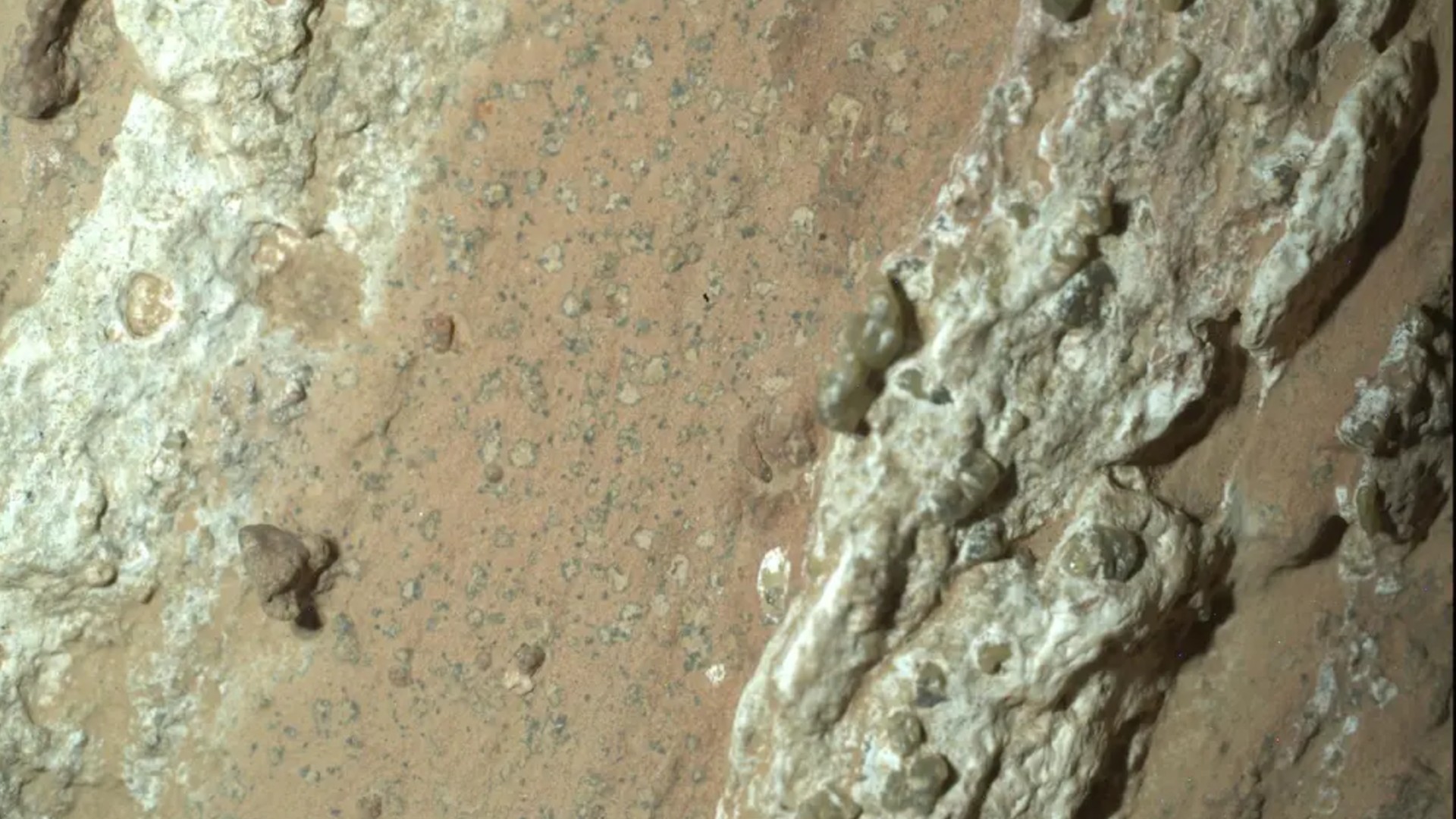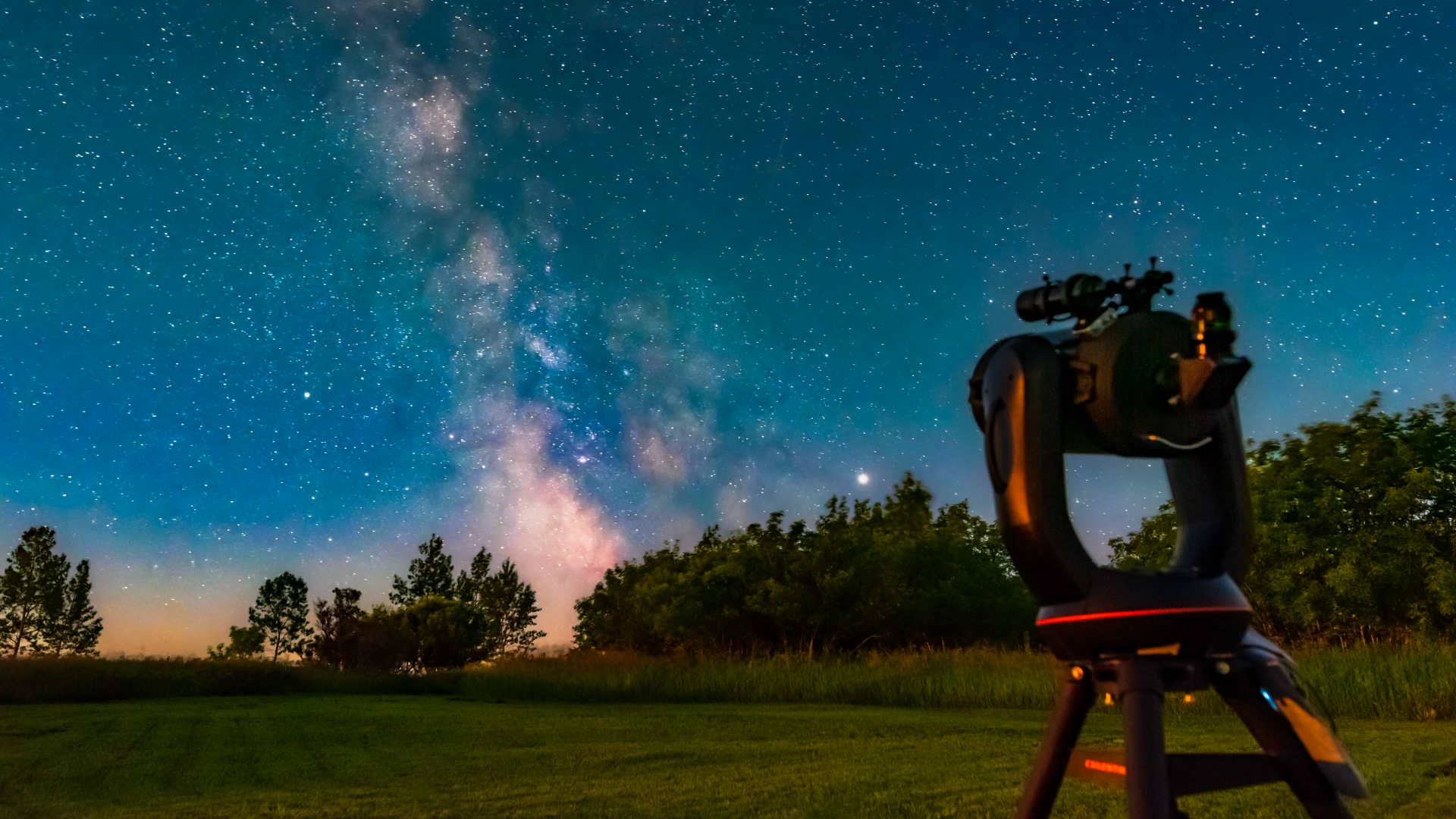'The metal detector has gone off': Perseverance rover's find is a shiny new clue in the search for life on Mars
"This is the moment where the metal detector has gone off and you've dug up something shiny. You still need to find out exactly what you've got — but you've got something to work with."

Mars hasn't given us proof of life, but it has handed scientists a new kind of mystery.
On the western edge of Jezero Crater, NASA's Perseverance rover has been exploring Neretva Vallis, a river-carved valley that once fed a vast Martian lake. There, in an outcrop of ancient mudstone called the Bright Angel formation, the rover found one of its most intriguing targets yet: an arrowhead-shaped rock nicknamed Cheyava Falls, flecked with tiny black "poppy seeds" and ringed "leopard spots."
Closer analysis revealed that the strange markings are rich in organic carbon, iron, phosphorus and sulfur. More strikingly, scientists recently reported signs of vivianite (an iron phosphate) and greigite (an iron sulfide). On Earth, both minerals typically form through redox reactions — the electron-swapping processes that underpin all life. Plants rely on redox in photosynthesis, humans and other animals use it to extract energy from food during respiration, and microbes employ it to "breathe" metals in oxygen-starved settings such as deep-sea vents.
On our planet, such signatures are often the fingerprints of biology. On Mars, they remain a tantalizing "maybe" — chemical traces that could point to life, or could also arise from purely non-living processes. Either way, they mark a departure from the chemistry that scientists are used to seeing on the Red Planet.
"Whatever their origin, this is a very distinct chemistry than anything we've seen in ~20-25 years of roving the planet," Joel Hurowitz, a geoscientist at Stony Brook University in New York who led the recent study, told Space.com.
Even if the reactions turn out to be non-biological, he added, they could reveal "prebiotically useful chemistry we haven't thought about before," while also serving as a reminder of the ways that abiotic nature can mimic life's signals — false positives for biosignatures "that we'll have to do some really hard thinking about."
A window into Mars' past
Mars' surface usually tells a story of oxidation: iron reacting with oxygen billions of years ago, when liquid water and a thicker atmosphere were still present, leaving behind the global blanket of rust that earned Mars its enduring nickname, the Red Planet. At Cheyava Falls, however, Perseverance identified minerals that formed through the other half of the equation, known as reduction, where iron and sulfur gained electrons instead of losing them.
Breaking space news, the latest updates on rocket launches, skywatching events and more!
Redox reactions are especially compelling because, left to themselves, they proceed only sluggishly at low temperatures. That slow pace, and the energy locked within it, makes them an excellent fuel source for life. Life fast-forwards these reactions with enzymes, enabling microbes to seize the energy that would otherwise dissipate.
"All living things need to get energy from their environment. Life on Earth figured out how to do that very early by taking advantage of redox reactions," study co-author Mike Tice, a geobiologist at Texas A&M University in College Station, told Space.com.
Seeing evidence of redox chemistry on Mars, then, raises the possibility that similar processes could once have supported any life that may have emerged there.
"Based on what we know of life on Earth as well as some other theoretical factors, we think that life almost anywhere will probably wind up using redox reactions to get energy," said Tice. Searching ancient rocks for the chemical fingerprints of redox reactions, particularly cases where they appear to have unfolded faster than non-biological chemistry alone could explain, "is a key strategy for finding past life," he added.
That's what makes the minerals Perseverance spotted — particularly greigite in the leopard spots — so compelling. Abiotic sulfide production at low temperatures is extremely sluggish, according to Tice.
"They basically don't happen at the temperatures that we think these rocks experienced," he said. "So, the very things that make this particular redox reaction useful to some living organisms are the things that make it useful as potential evidence for life."
With rocks more than 3.5 billion years old, non-biological processes have had plenty of time to leave behind features that mimic biosignatures. At Cheyava Falls, though, the rocks show no signs of being altered by heat or pressure that could have driven fast chemical reactions, yet sulfides are present in notable amounts. For scientists, that discrepancy keeps open — but does not confirm — the possibility of a biological origin.
"It's very indirect evidence for life," Chris Impey, an astronomer at the University of Arizona who was not involved in the study, told Space.com. "It's not going to convince anyone that there's life on Mars beyond a reasonable doubt, which is at this point where the game is."
Gerard van Belle, the director of science at Lowell Observatory in Arizona, who was also not involved in the study, agreed. "It's not a smoking gun," he told Space.com. "The $100,000 question here is, Are those things something that would come from a uniquely biotic source, or are there abiotic ways?"
Still, these redox reactions intrigue scientists because they leave behind minerals that act like time capsules. Their chemistry and abundance preserve clues about the environment in which they formed — whether water once moved through the rocks, how oxygen-rich or oxygen-poor the environment was, and whether energy sources existed that microbes might have tapped.
The Bright Angel mudstone also looks chemically distinct from other Jezero rocks. It is unusually oxidized and stripped of elements like magnesium and calcium, a profile that Hurowitz said resembles soils on Earth that have been heavily weathered by long exposure to rain. That distinction likely reflects shifts in Mars' climate and atmosphere as Jezero Crater filled with sediment, the researcher said.
"The Bright Angel formation adds new dimensions to the overall picture of Mars' past environments," Hurowitz said. It tells scientists that the planet's climate and atmosphere may have varied considerably through time, "but also [have been] capable of supporting habitable environments while all of that variation was occurring."
Perseverance has already drilled a core from Cheyava Falls and cached it for eventual return to Earth. If all goes to plan with NASA's Mars Sample Return (MSR) mission campaign, scientists are eager to analyze the rock in ways impossible aboard the rover. (That's far from guaranteed, however; MSR has been plagued by delays and cost overruns, and President Donald Trump's 2026 proposed federal budget would cancel the project.)
Hurotwiz said he would "want to go right to work" on isotopic measurements of the Cheyava Falls sample — comparing lighter and heavier versions of iron, sulfur and carbon in the rock, particularly between the original mudstone and the newer minerals, vivianite and greigite, that crystallized within it. Differences in isotopic compositions between these reactants and products, he noted, "can be diagnostic in determining whether or not biology was involved in the redox reactions that formed them."
Van Belle said that returning pristine samples to Earth would make "a big difference" in the search for fossil-like structures — the kind of evidence that has long fueled debates, such as those over the famous Mars meteorite Allan Hills 84001, but this time without the uncertainty of contamination.
Tice said that, if someone had asked him two years ago whether life ever existed on Mars, his answer would have been that scientists simply didn't know enough to have a meaningful discussion. Previous NASA missions had shown that the Red Planet's surface could have supported life billions of years ago but didn't offer evidence for or against its habitation during that time.
Now, Perseverance is beginning to change that.
"We now have the first hints," he said, "and we can have real arguments and plan new observations constrained by the reality of actual rocks and minerals — that excites me!"
He likened the moment to treasure hunting. "This is the moment where the metal detector has gone off and you've dug up something shiny," he said. "You still need to find out exactly what you've got — but you've got something to work with."

Sharmila Kuthunur is an independent space journalist based in Bengaluru, India. Her work has also appeared in Scientific American, Science, Astronomy and Live Science, among other publications. She holds a master's degree in journalism from Northeastern University in Boston.
You must confirm your public display name before commenting
Please logout and then login again, you will then be prompted to enter your display name.
